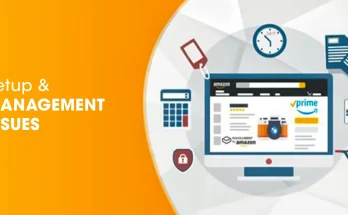In today’s digital world, exchanging documents securely is more critical than ever.
With so many online options like email, messaging apps, and cloud drives, it can be difficult to know which services are truly secure for sharing sensitive files.
Unauthorized access and accidental sharing of confidential information are common risks—and they can lead to serious consequences like data breaches, financial losses, and reputational damage.
Secure document exchange helps prevent these problems by offering a reliable and protected method for sharing important information.
Whether for business, legal, or personal use, a secure approach to document exchange provides peace of mind.
One of the most effective ways to share documents securely is by using a secure document exchange portal. These services provide access controls so only the right people can view or manage files, reducing the chances of data leaks.
These portals also often include branding options, e-signatures, and audit trails—making them especially helpful for industries like law, finance, healthcare, and accounting.
For instance, a firm can use a portal to share documents with clients in a secure, trackable way. This ensures that access is limited to intended recipients and meets data protection regulations.
Let’s explore what secure document exchange means and how to start using it effectively.
What is Secure Document Exchange from ETHERFAX.net?
Secure document exchange is the process of safely sharing files between two parties—whether individuals or businesses. The main goal is to keep sensitive information protected from unauthorized access.
There are two points during which documents must be secured:
- In-transit: When documents are being sent, such as via email or file upload. If not encrypted, files can be intercepted.
- At-rest: When documents are stored on servers or devices. Even while not being shared, documents can still be vulnerable if not protected.
Encrypting files during both stages is essential. Encryption converts a file into a code that only someone with the correct key can decode, making it unreadable to others.
- In-transit encryption uses secure protocols to protect documents while they are being transferred.
- At-rest encryption protects stored files by ensuring they cannot be read even if accessed.
Another key aspect is authorization—ensuring that only specific individuals can access certain files.
Secure document exchange portals help with this by offering user authentication, role-based access, and permission settings. This ensures sensitive documents are only available to those who need them.
Do You Need a Secure Document Exchange Portal?
Basic file transfers can often be handled with email attachments or standard cloud storage, especially when dealing with low volumes or non-sensitive data.
But for those needing higher levels of security, control, and convenience, a dedicated secure document exchange portal can be a smart investment.
Consider these factors when deciding:
- Convenience: Centralized platforms reduce the need for multiple tools, streamlining the document sharing process.
- Customization: A professional, branded experience can be achieved with customizable portals.
- Authorization Control: Define exactly who can access, edit, or share documents to prevent unauthorized access.
Other key considerations include:
- Budget: While these services often come with fees, they can save time, reduce risk, and improve client trust.
- Client or Business Volume: High client numbers or frequent exchanges call for a more scalable and secure solution.
- File Size: Larger files may exceed the limits of basic sharing tools.
- Exchange Frequency: Frequent document transfers benefit from a consistent and efficient platform.
Each portal is different, so it’s important to assess specific business needs, such as the required number of users, storage space, or access controls.
Benefits of Using a Secure Document Exchange Portal
If you choose to use a secure portal, you’ll gain several advantages:
- Brand Customization: Modify colors, logos, and interfaces to match your organization’s identity.
- Custom Workflows: Tailor how documents are uploaded, reviewed, and shared based on your team’s processes.
- Custom Forms: Collect client data efficiently with personalized digital forms.
- E-Signatures: Send documents for quick and secure signing with full legal compliance.
- Secure File Sharing: Upload and download files through encrypted channels.
- Mobile Access: Share and manage documents from any device, anywhere.
- Audit Trails: Track file access and changes for compliance and transparency.
These features provide enhanced control and reduce the chances of mistakes or security breaches.
Top 5 Methods for Secure Document Exchange
Method 1: Secure Document Exchange Portals
Secure document exchange portals are built to safely transfer sensitive files between parties using strong security measures. These portals use end-to-end encryption, which means documents are encrypted from the sender’s device to the recipient’s, making intercepted data unreadable without the correct decryption key. Access controls allow administrators to define who can view or edit documents, ensuring that only authorized individuals have access. Audit trails enhance accountability by recording document activity, such as who accessed the file, when, and what changes were made. Multi-factor authentication adds an extra layer of security by requiring users to verify their identity using multiple credentials. These portals support uploading and downloading files, as well as collecting information through custom forms. Some portals also integrate with digital signature tools, enabling users to send and sign documents without leaving the platform. With mobile access, users can manage and share documents from any device, ensuring flexibility and security even on the go.
Method 2: Cloud Storage Services
Cloud storage services provide a convenient way to store, access, and share documents while maintaining strong data security. These platforms encrypt data both during transmission and while stored on servers. Access permissions can be set to control who can view or edit specific documents, with the ability to share content with selected individuals or groups. Redundancy measures are often in place, with data backed up across multiple locations to prevent loss. These services typically comply with industry regulations and standards, ensuring secure handling of sensitive data. Users can easily generate shareable links and collaborate on documents in real-time, improving teamwork and productivity. Integration with other tools and applications, along with mobile apps, makes it easy to access documents from anywhere and share them as needed.
Method 3: Encrypted Email via Attachments
Encrypted email provides a secure method of sending documents by protecting both the email content and attachments from unauthorized access. Using end-to-end encryption, only the sender and intended recipient can read the contents. Public Key Infrastructure (PKI) facilitates secure communication by using cryptographic key pairs; the sender encrypts the message with the recipient’s public key, and only the private key can decrypt it. Digital signatures confirm the authenticity of the sender and the integrity of the message. This method integrates with existing email systems and workflows, making it accessible and user-friendly. Organizations can enforce encryption policies to ensure consistent security for sensitive communication, helping to maintain compliance with data protection regulations.
Method 4: Secure File Transfer Protocol (SFTP)
Secure File Transfer Protocol is a method for transferring files securely over a network using SSH (Secure Shell) encryption. Both data and commands are encrypted, protecting them from interception during transmission. Authentication methods such as passwords and public keys ensure that only authorized users can access the system. SFTP performs data integrity checks to confirm that files are not altered during the transfer process. It is also firewall-friendly, operating over a single port, which simplifies network management. This method is ideal for transferring large volumes of sensitive data and can be automated with scripts and scheduled tasks. It integrates well with other systems and supports cross-platform compatibility, making it suitable for a wide range of business environments.
Method 5: Encrypted Messaging Apps
Encrypted messaging apps offer a secure and user-friendly way to share documents and communicate. These apps use end-to-end encryption to ensure that only the intended participants can access messages and files. They also implement forward secrecy, meaning a new encryption key is used for each session, so past communications remain secure even if a key is compromised. These platforms retain minimal metadata, further protecting user privacy. Users can send documents, photos, and other media securely through encrypted chat sessions. Group chats also allow multiple participants to exchange files safely. Available across mobile and desktop platforms, these apps provide flexibility for secure document sharing on the go.
Conclusion
Protecting sensitive information during document exchange is essential. Whether through secure document portals, cloud storage, encrypted email, SFTP, or messaging apps, each method offers unique benefits for maintaining the confidentiality and integrity of data. Choosing the right method depends on your specific needs, but using any of these secure approaches ensures that your documents remain protected both during transmission and at rest.




